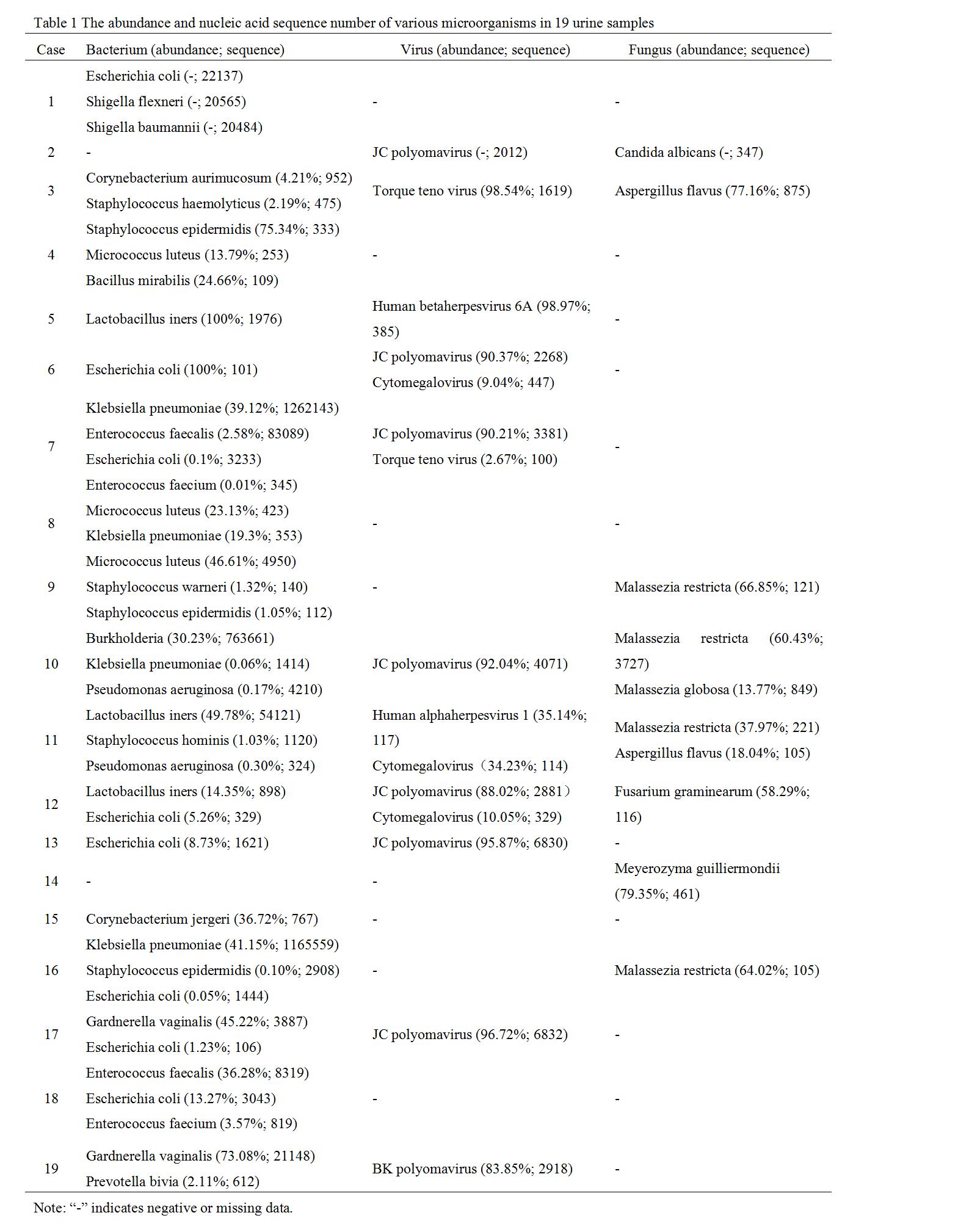Application of Metagenomicnext-Generation Sequencing in the Diagnosis and Treatment of Recurrent Urinary Tract Infections in Kidney Transplant Recipients
W. Duan, X. Tian, X. Wu, G. Cao, T. Yan
Henan Province People's Hospital, Zhengzhou, Henan Province, China
Meeting: 2022 American Transplant Congress
Abstract number: 1006
Keywords: Infection, Post-operative complications, Reinfection, Urinalysis
Topic: Clinical Science » Infection Disease » 25 - Kidney Infectious Non-Polyoma & Non-Viral Hepatitis
Session Information
Session Name: Kidney Infectious Non-Polyoma & Non-Viral Hepatitis
Session Type: Poster Abstract
Date: Sunday, June 5, 2022
Session Time: 7:00pm-8:00pm
 Presentation Time: 7:00pm-8:00pm
Presentation Time: 7:00pm-8:00pm
Location: Hynes Halls C & D
*Purpose: Rapid and accurate pathogen diagnosis is the key to the treatment of recurrent urinary tract infections (RUTI) after kidney transplant. Metagenomic next-generation sequencing (mNGS) is a promising powerful pathogen detection technique, and its clinical application in post-transplant RUTI remains to be studied.
*Methods: Nineteen post-transplant RUTI cases were collected in this study. The pathogen in urine were detected and compared by mNGS and conventional urine culture respectively. Modification of the antibiotic treatment strategy according to mNGS was also assessed.
*Results: The positive rate of mNGS for detecting pathogens in these cases was significantly superior to that of culture (100.00% vs 31.58%; p < 0.01). The dominant bacterium were Escherichia coli, Klebsiella pneumoniae, Staphylococcus epidermidis, Micrococcus luteus, Lactobacillus iners, Enterococcus faecalis, Enterococcus faecium and Pseudomonas aeruginosa. The dominant viruses were JC polyomavirus, Cytomegalovirus and Torque teno virus. The dominant fungi were Malassezia restricta, Aspergillus flavus and Candida albicans. The identification rates for viruses (57.89% vs 0.0%; p < 0.01) and fungi (42.11% vs 0.0%; p < 0.01) increased remarkably by mNGS compared to culture. The identification rate for bacteria was 89.47% (17/19) by mNGS, and 68.42%(13/19) of them were co-infection with fungi or viruses. By contrast, only bacteria in 31.85 % (6/19) of cases were detected positively by culture. Moreover, higher proportion of multi-pathogen were obtained by mNGS compared to culture (68.42% vs 10.53%; p < 0.01). All patients were cured or stabilized by modified targeted anti-infective treatment.
*Conclusions: The urine microbial spectrum of post-transplant RUTI was obtained by mNGS, demonstrating remarkable etiological diagnostic performance, particularly in identifying viruses, fungi, and multi-pathogen infections. The clinical application of mNGS could effectively guide anti-infective treatment strategies for post-transplant RUTI and benefit outcomes.
To cite this abstract in AMA style:
Duan W, Tian X, Wu X, Cao G, Yan T. Application of Metagenomicnext-Generation Sequencing in the Diagnosis and Treatment of Recurrent Urinary Tract Infections in Kidney Transplant Recipients [abstract]. Am J Transplant. 2022; 22 (suppl 3). https://atcmeetingabstracts.com/abstract/application-of-metagenomicnext-generation-sequencing-in-the-diagnosis-and-treatment-of-recurrent-urinary-tract-infections-in-kidney-transplant-recipients/. Accessed December 14, 2025.« Back to 2022 American Transplant Congress

